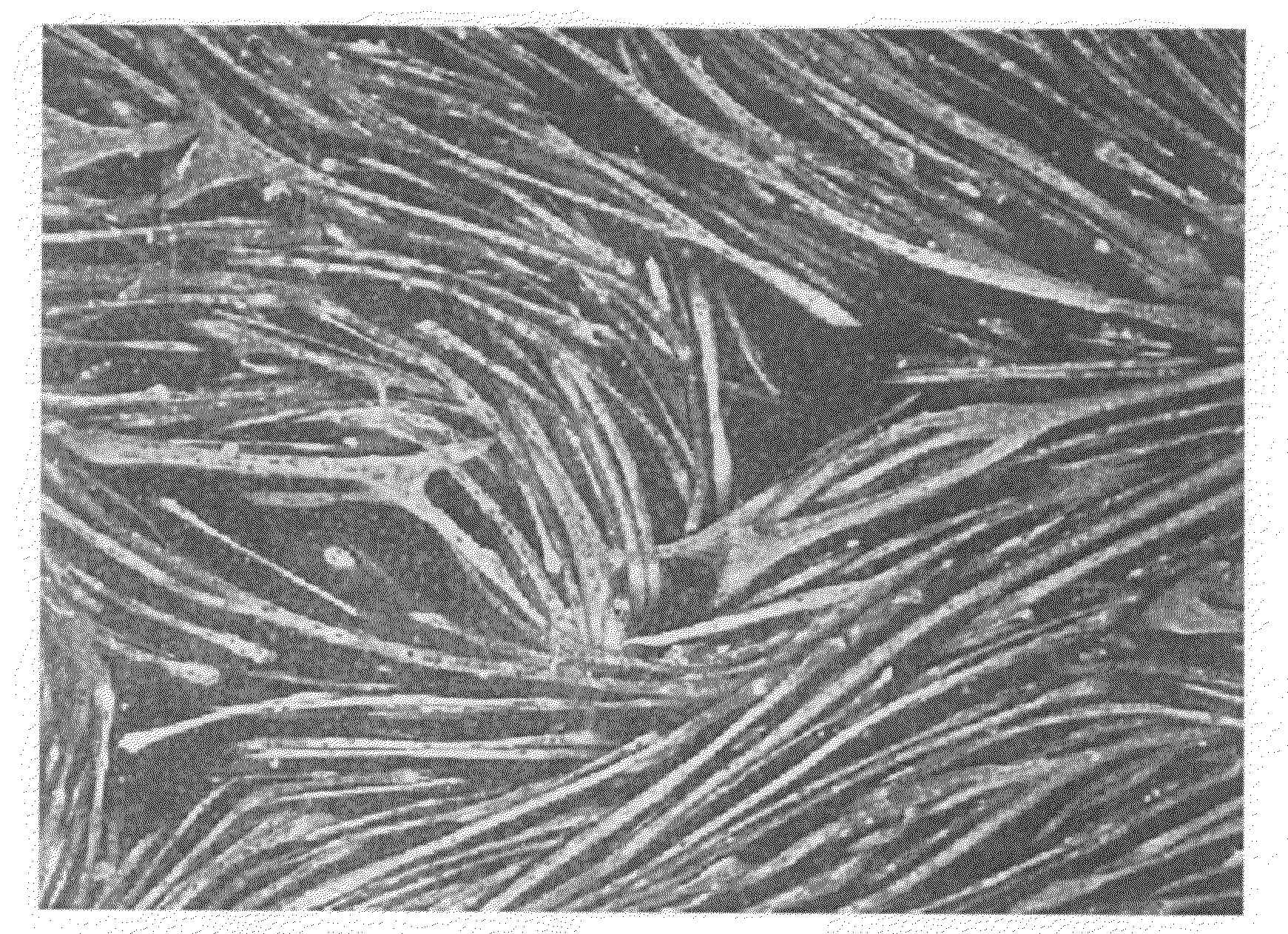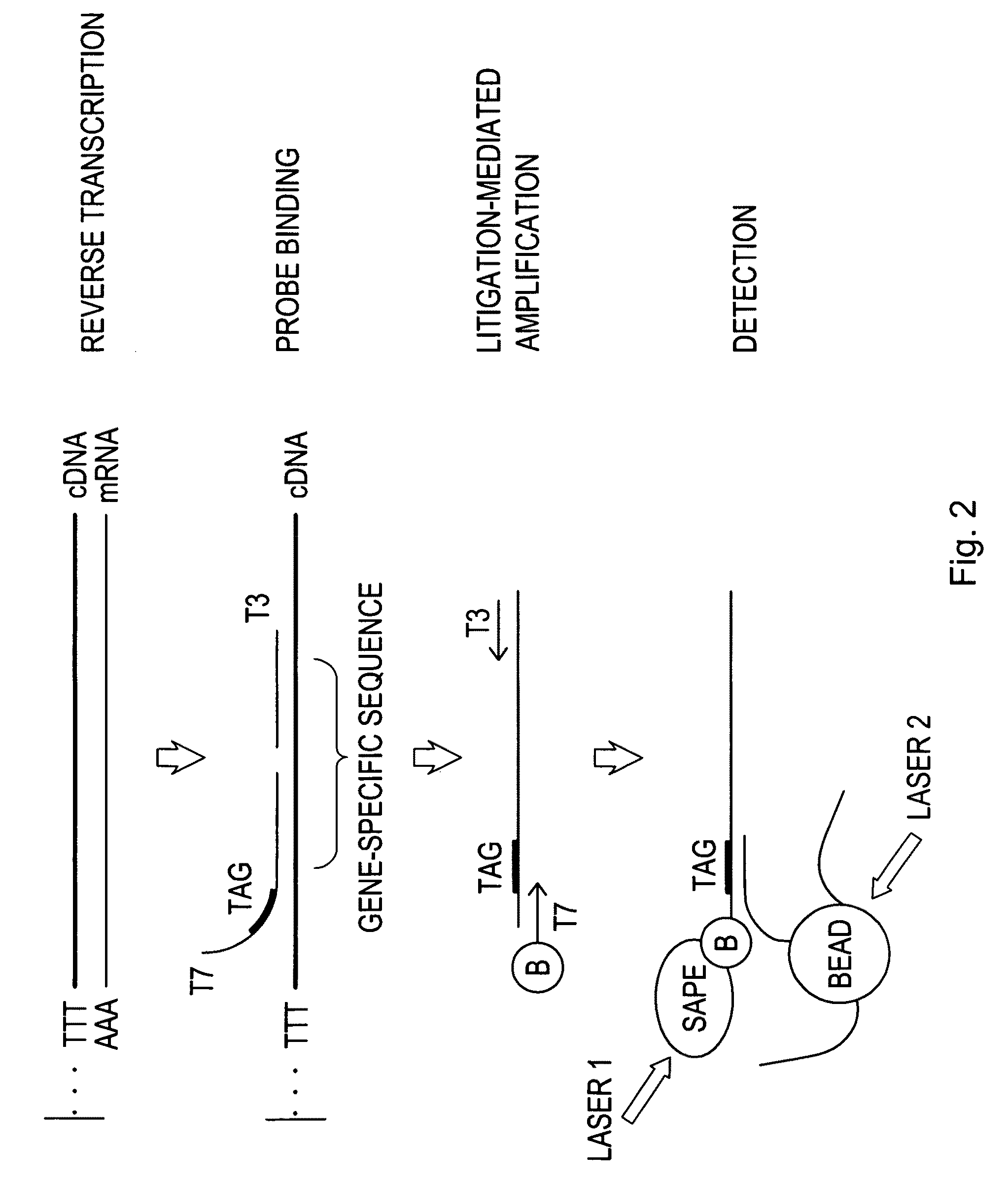Methods and compositions for treating metabolic disorders
- Summary
- Abstract
- Description
- Claims
- Application Information
AI Technical Summary
Benefits of technology
Problems solved by technology
Method used
Image
Examples
Example
[0171]Examples 1 and 2 provide exemplary embodiments of methods for identifying compounds than enhance mitochondrial function.
[0172]One aspect of the invention provides for methods for identifying compounds useful in treating a disorder characterized by mitochondrial dysfunction in a subject. The methods comprise assaying for the effect of one or more compounds on OXPHOS gene expression and mitochondrial function and correlating the effect determined from those assays on mitochondrial function. An increase in OXPHOS gene expression and an increase of mitochondrial function are indicative of compounds useful in treating a disorder.
[0173]In some embodiments, the mitochondrial function is assayed by measuring reactive oxygen species (ROS) and an increase in OXPHOS gene expression and a decrease in ROS is indicative of a compound that enhances mitochondrial function. In some embodiments, the method further comprises assaying for the effect of one or more compounds on cell viability. In ...
Example
Example 1
[0223]We performed gene expression-based screening for mitochondrial biogenesis and cellular assays of mitochondrial function in mouse skeletal muscle cells. Approximately ˜2500 compounds were screened.
Culture and Differentiation of Myoblasts in 384-Well Format
[0224]We have optimized protocols for growing and differentiating murine C2C12 myoblasts. These cells are simple to culture, can be differentiated into myotubes, and have been investigated in the context of mitochondrial biogenesis following electrical stimulation (Wu et al. 1999) and PGC-1α transduction (Connor et al. 2001). FIG. 1 shows myotubes in 384-well plate wells stained for nuclei with Hoechst (FIG. 1B) and for myotube morphology with anti-myosin heavy chain (FIG. 1A). The nuclei were counted using Axon ImageXpress automated imaging analysis. We detected 5313+ / −384 nuclei per well, corresponding to a coefficient of variation (CV) of 7%.
Cellular Assays of Mitochondrial Biogenesis and Function
[0225]Mitochondria...
Example
Example 2
Identification of Lead Compounds for Treating Mitochondrial Disorders
[0239]The GE-HTS assay is of particular interest to us since it is specifically assaying for the gene expression signature of human diabetes (Mootha Nat. Genet. 2003). We queried our compendium to identify compounds that might be capable of elevating OXPHOS expression while reducing ROS accumulation, as we and others have recently shown that a decline in OXPHOS gene expression and an elevation in ROS generation are associated with type 2 diabetes (Mootha Nat. Genet. 2003), neurodegeneration and aging.
[0240]We selected the top 22 compounds (˜1% of tail distribution) that promote the OXPHOS gene expression signature and re-tested these compounds in quadruplicate at four decreasing doses (10 μl, 0.1, 0.01 μM). Sixteen of 22 compounds reproduced the increase in expression signature at p<0.05 significance level (Kruskal-Wallis test, Dunn's multiple comparison post-test) at screening dose and 8 of these showed s...
PUM
| Property | Measurement | Unit |
|---|---|---|
| Electric charge | aaaaa | aaaaa |
| Disorder | aaaaa | aaaaa |
| Cell viability | aaaaa | aaaaa |
Abstract
Description
Claims
Application Information
 Login to View More
Login to View More - R&D
- Intellectual Property
- Life Sciences
- Materials
- Tech Scout
- Unparalleled Data Quality
- Higher Quality Content
- 60% Fewer Hallucinations
Browse by: Latest US Patents, China's latest patents, Technical Efficacy Thesaurus, Application Domain, Technology Topic, Popular Technical Reports.
© 2025 PatSnap. All rights reserved.Legal|Privacy policy|Modern Slavery Act Transparency Statement|Sitemap|About US| Contact US: help@patsnap.com



